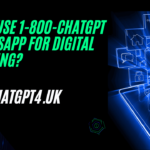Today we are gonna discuss the difference between Auto-GPT and AgentGPT. In the world of artificial intelligence and natural language processing, language models have played a significant role in advancing various applications. Two such models, Auto-GPT and AgentGPT, have gained attention for their unique capabilities in specific domains.
Auto-GPT, short for Automatic Procedural Generation using Transformers, focuses on generating computer code, while AgentGPT is designed to simulate conversational agents in interactive storytelling environments.
This article delves into the differences between Auto-GPT and AgentGPT, exploring their training data, applications, and functionalities.
Auto-GPT: Harnessing the Power of Code Generation
Auto-GPT has revolutionized the field of programming by leveraging the power of language models to assist developers in code-related tasks. This specialized model has been trained on vast amounts of code-related data and programming languages, enabling it to understand code snippets, provide code completions, and even generate software instructions.
- Training Data: The foundation of Auto-GPT’s expertise lies in its training data. It has been exposed to a wide range of programming languages, code repositories, and coding conventions. This extensive training allows Auto-GPT to grasp the nuances of different programming paradigms and provide accurate code-related suggestions.
- Code Assistance: One of the primary applications of Auto-GPT is in code assistance. Developers can leverage Auto-GPT to receive intelligent code completions, which significantly speeds up the development process. By analyzing the context and syntax, Auto-GPT can generate relevant code suggestions, helping programmers write code more efficiently.
- Code Generation: Auto-GPT takes code assistance a step further by enabling code generation. It can fill in missing code sections, generate entire code snippets, or even assist in automating repetitive coding tasks. This capability not only saves time but also enhances productivity by providing developers with reliable starting points for their projects.
AgentGPT: Unleashing Conversational Storytelling
While Auto-GPT focuses on the world of programming, AgentGPT aims to simulate conversational agents in interactive storytelling environments. It has been trained on diverse dialogue data, both fictional and real-world conversations, enabling it to engage in interactive and dynamic conversations.
- Training Data: AgentGPT’s training data comprises a vast array of dialogues, covering various topics, contexts, and conversational styles. This diverse training enables the model to understand and generate responses based on the given dialogue context, creating a more immersive conversational experience.
- Conversational Engagement: The primary goal of AgentGPT is to facilitate interactive and engaging conversations. It can respond to user queries, provide information, and maintain the flow of conversation by understanding the dialogue context. AgentGPT’s ability to generate coherent and contextually relevant responses enhances the conversational experience for users.
- Interactive Storytelling: Another exciting application of AgentGPT is in interactive storytelling. By leveraging its conversational abilities, AgentGPT can simulate characters, generate dialogues, and create dynamic narrative experiences. This opens up new possibilities for interactive fiction, gaming, and virtual role-playing scenarios.
Differentiating Factors: Auto-GPT vs AgentGPT
While both Auto-GPT and AgentGPT are based on the GPT-3.5 architecture, several factors distinguish them from each other:
- Training Data: Auto-GPT focuses on code-related data and programming languages, while AgentGPT is trained on dialogue data, encompassing both fictional and real-world conversations.
- Applications: Auto-GPT is designed to assist developers in code-related tasks, such as code completion and code generation. AgentGPT, on the other hand, aims to provide interactive conversational experiences and facilitate interactive storytelling.
- Contextual Understanding: Auto-GPT is trained to understand programming language syntax, code structure, and programming paradigms. AgentGPT, on the other hand, excels in contextual understanding of dialogue and can generate coherent and relevant responses.
- User Interactions: Auto-GPT primarily interacts with users through code-related queries and suggestions. AgentGPT, however, engages users in dynamic conversations, responding to queries and generating interactive dialogues.
Limitations and Challenges:
- Auto-GPT: While Auto-GPT is highly proficient in generating code-related suggestions and completions, it may occasionally produce incorrect or inefficient code snippets. Developers need to exercise caution and verify the generated code for correctness and optimization. Additionally, Auto-GPT might struggle with understanding complex programming concepts or specific domain-specific languages that are not well-represented in its training data.
- AgentGPT: While AgentGPT excels in generating contextually relevant responses, it may sometimes produce responses that sound plausible but lack factual accuracy. This can be challenging when dealing with information-sensitive conversations or providing accurate information. Ensuring the reliability and fact-checking of AgentGPT’s responses is crucial, especially in applications where accuracy is paramount.
Ethical Considerations:
- Bias: Both Auto-GPT and AgentGPT models can inherit biases present in their training data. This can lead to biased responses or code suggestions, perpetuating existing biases in programming or conversation domains. Efforts should be made to address and mitigate biases to ensure fair and unbiased outcomes.
- Misuse: The capabilities of Auto-GPT and AgentGPT can be misused for malicious purposes. For example, Auto-GPT’s code generation abilities can be exploited to generate harmful or malicious code. Similarly, AgentGPT can be manipulated to spread misinformation or engage in harmful conversations. Proper measures and ethical guidelines are essential to prevent such misuse.
Future Developments:
- Improving Code Generation: Auto-GPT can benefit from further advancements to enhance the quality and efficiency of generated code. Future iterations may focus on fine-tuning the model to improve accuracy, optimizing code snippets for performance, and incorporating more programming paradigms and domain-specific knowledge.
- Contextual Understanding in AgentGPT: Future developments in AgentGPT could focus on enhancing contextual understanding, ensuring more accurate and contextually appropriate responses. Fine-tuning the model to handle ambiguous queries, better understanding user intents, and improving factual accuracy are areas that can be explored.
- Ethical Frameworks and Safety Measures: As the capabilities of these language models continue to evolve, the development of robust ethical frameworks and safety measures becomes imperative. Addressing biases, ensuring user privacy, and preventing misuse should be at the forefront of further advancements in Auto-GPT, AgentGPT, and similar models.
Conclusion:
Auto-GPT and AgentGPT represent two remarkable advancements in the field of language models. While Auto-GPT caters to the programming community, providing code assistance and generating software instructions, AgentGPT excels in creating immersive conversational experiences and interactive storytelling.
Their distinct training data, applications, and functionalities set them apart and offer unique capabilities in their respective domains. Whether it’s streamlining the coding process or enhancing interactive narratives, Auto-GPT and AgentGPT have undoubtedly made significant contributions to the advancement of language models and AI-powered applications.
FAQs
What is Auto-GPT?
Auto-GPT, or Automatic Procedural Generation using Transformers, is a language model based on the GPT-3.5 architecture. It is specifically trained on code-related data and programming languages to assist developers in tasks such as code completion, code generation, and providing code-related suggestions.
What is AgentGPT?
AgentGPT is an extension of the GPT model designed for simulating conversational agents in interactive storytelling environments. It is trained on diverse dialogue data, both fictional and real-world conversations, enabling it to engage in dynamic and immersive conversations, respond to user queries, and generate contextually relevant responses.
How does Auto-GPT differ from AgentGPT?
Auto-GPT and AgentGPT differ in their training data, applications, and functionalities. Auto-GPT focuses on code-related data and programming languages, assisting developers in code-related tasks. AgentGPT, on the other hand, is trained on dialogue data and aims to create interactive conversational experiences and facilitate interactive storytelling.
What are the limitations of Auto-GPT and AgentGPT?
Auto-GPT may occasionally generate incorrect or inefficient code snippets and may struggle with understanding complex programming concepts or specific domain-specific languages. AgentGPT, while proficient in generating contextually relevant responses, can sometimes lack factual accuracy and may need fact-checking. Both models can also inherit biases present in their training data.
What are the future developments for Auto-GPT and AgentGPT?
Future developments for Auto-GPT may focus on improving code generation accuracy, optimizing code snippets for performance, and incorporating more programming paradigms and domain-specific knowledge. For AgentGPT, advancements may concentrate on enhancing contextual understanding, handling ambiguous queries, improving factual accuracy, and ensuring user intents are properly understood.
What are the ethical considerations with Auto-GPT and AgentGPT?
Both Auto-GPT and AgentGPT can inherit biases from their training data, potentially leading to biased responses or suggestions. There is also a concern regarding the misuse of these models for malicious purposes. Addressing biases, developing ethical frameworks, and implementing safety measures are crucial to ensure responsible and unbiased use of these language models.







